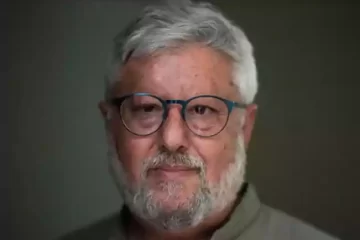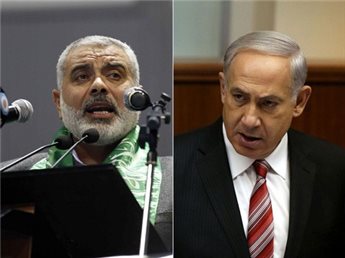The 2011 Hamas-Israel hostage deal, which I helped negotiate, set a price of over 1,000 Palestinian prisoners for one Israeli soldier. It should have been the very last time Israel had to ransom its citizens, but today, Hamas has the upper hand
Two days before Gilad Shalit came home, after five years as a Hamas hostage in Gaza, I wrote Prime Minister Benjamin Netanyahu:
“Mr. Prime Minister, you have proven your leadership… May we never be forced to deal with situations like this in the future. Now we must dedicate all of our efforts to advance real peace with our neighbors.” Netanyahu didn’t deserve that praise. In hindsight it’s clear he was acting out of political expediency, not a vision for a better future. I assumed once there was no longer an Israeli soldier captive in Gaza, there would be a chance to finally change the reality there, that the ground could be ripe for negotiating peace.
With that goal in mind, I hoped I could develop another, secret direct back channel, like the one I used to help negotiate the Shalit deal, but this time between Netanyahu and Palestinian Authority President Mahmoud Abbas.
I had no illusions that we could negotiate peace with Hamas, but I did think it could be possible to negotiate a long-term ceasefire with them, a Hudna as they called it.
Thirteen years and three wars later, the wounds of October 7 still raw, do I have regrets about my own role in the Shalit deal?
Absolutely not. The deal, which saw Israel exchange over 1,000 Palestinian prisoners for Shalit, should have been the very last time that Israeli and Hamas should have needed to negotiate a swap.
Yahya Sinwar, who was one of those prisoners, and is now leader of Hamas in Gaza, and considered a mastermind of October 7, was not the problem then and hard as it may be able to fathom for Israelis, he is not the problem now. (It should be noted that at the time the Shin Bet, Israel’s internal security agency, did not consider Sinwar to be especially dangerous. He was convicted of killing suspected Palestinian collaborators, not Israelis. The prisoners considered the most notorious in the deal were exiled abroad, Sinwar was not among them).
In the absence of peace, ongoing occupation and economic siege on Gaza, successive rounds of violence – especially this brutal war – thousands of potential Sinwars are being created.
After each war Hamas recruits its new cadets in the Nukhba, it’s elite force, from bereaved families. They are given the promise of paradise and revenge, unafraid of fighting and dying for their cause.
I am often descried as the “architect of the Shalit deal”. I was not. It was placed on the table by Egypt six months after Shalit was captured. It took five years before Israel and Hamas were prepared to accept it.
Shalit probably wouldn’t have been released in October 2011 if not for my secret direct back channel with Ghazi Hamad, a Hamas leader – best known to the Israeli public for justifying October 7 in an interview. Another month in captivity would have led to Shalit’s death, he was suffering from acute vitamin D deficiency and having trouble digesting food. Israel’s cabinet voted 26 to 3 for the deal, keeping the nation’s vow never to abandon citizens behind enemy lines.
The deal included releasing over 300 prisoners who killed Israelis, four who were responsible for killing my wife’s cousin.
After Shalit’s release, Hamad and I began drafting a hudna proposal.
I presented a draft to senior UN officials and Egyptian intelligence officers. Abbas told me such a deal was helpful for him as well as it would make it easier for the PA to negotiate with Israel.
I met with then Defense Minister Ehud Barak and presented him with the draft. Barak was skeptical but created a committee of army intelligence officers. They recommended against entering any formal arrangements with Hamas, arguing it would strengthen them and that Israel should focus on deterrence.
Deterrence is a nice concept, but it’s not a mathematical equation. How many people must be killed? How many homes erased?
I’ve long argued it’s impossible to create deterrence with Hamas, which sanctifies death and sees dying a martyr for Palestine as a fulfillment of life’s purpose.
By October 2012 violence was flaring again. I phoned Ghazi and suggested we renew our long-term ceasefire efforts. He agreed and drafted a text.
Two months later, Ghazi told me top Hamas leaders approved the draft cease-fire deal and he’d be showing it to Ahmad Jaabri, a top leader of Hamas’ military wing, that morning. Later that day Israel assassinated Jaabri (who had read the draft), putting an end to our long-term cease fire quest.
Earlier that year I began working on a secret direct channel between Abbas and Netanyahu.
I met with Abbas and afterwards updated Netanyahu that Abbas agreed to a direct secret channel, that he spoke of a deep commitment to true peace and about his daily struggle against terrorism and that he agreed to a demilitarized Palestinian state. Abbas said at the time, “We must not miss the chance for peace. I’m ready and I want to do it with Netanyahu because I know that he will bring all of Israel with him.” I asked Abbas if an agreement was secured, what would happen with Hamas and Gaza. He answered he was convinced Gazans would not forgo the possibility of enjoying real peace. “They will force the agreement on the regime there, and that is how we will bring about real Palestinian unity,” he told me.
But Netanyahu rejected the initiative and refused to meet Abbas.
As we wait for final word about a possible cease-fire deal in exchange for a hostage-prisoner swap, I know, based on my 17 years of negotiating with Hamas, the only way of getting all of the 136 Israeli hostages home is through an agreement with them. I understand the only deal acceptable to them is the end of the war, Israeli withdrawal from Gaza and all of the hostages in exchange for all of the prisoners – that will be a significant number. This is a huge victory for Hamas, but it must be a short-lived victory.
The war can wait, the hostages cannot. Israel can take care of Sinwar and the others in the same way it dealt with many Hamas leaders over the years, Jaabri among them.
Prisoners released can be rearrested – Israel has done so in the past. I think military pressure will result in the killing of more hostages.
Hamas has the upper hand and are unlikely, based on past experience, to back down from their demands. This is the reality we must face if we are to remain true to the ethos of not abandoning our people.
So no, I don’t regret the Shalit deal and the precedent it set. I regret our leadership didn’t build on it to forge a different way forward that could have possibly neutered the Hamas threat and even led to a renewed peace deal with the Palestinian Authority. It’s the price of that hubris we are paying for today in the most agonizing of ways.


